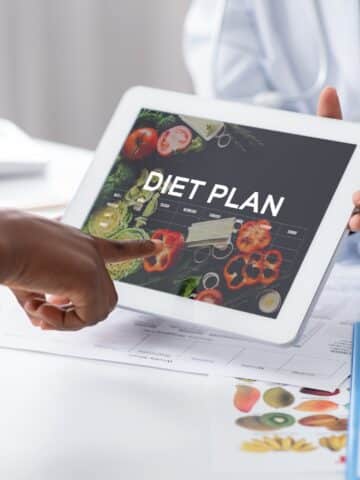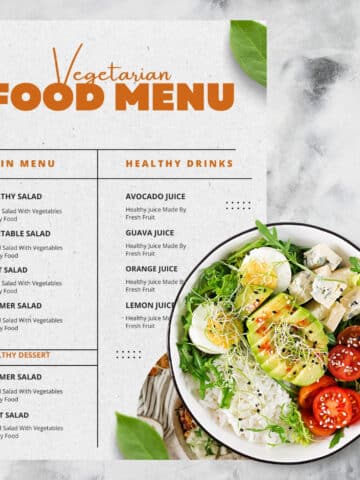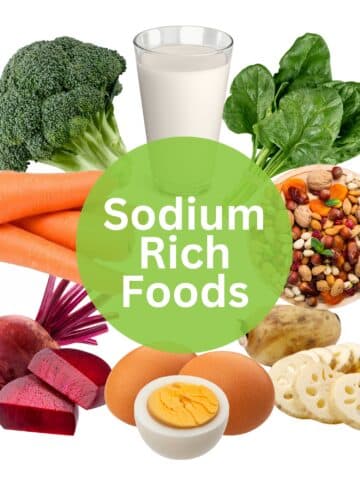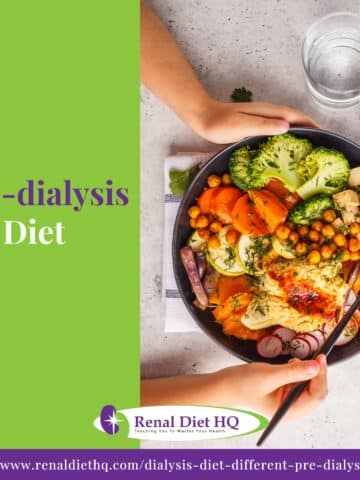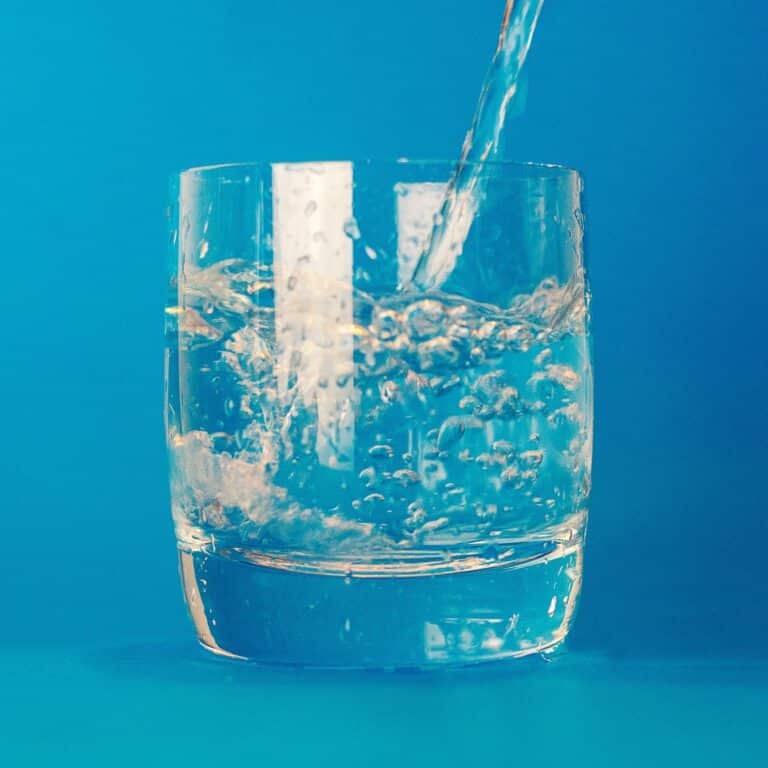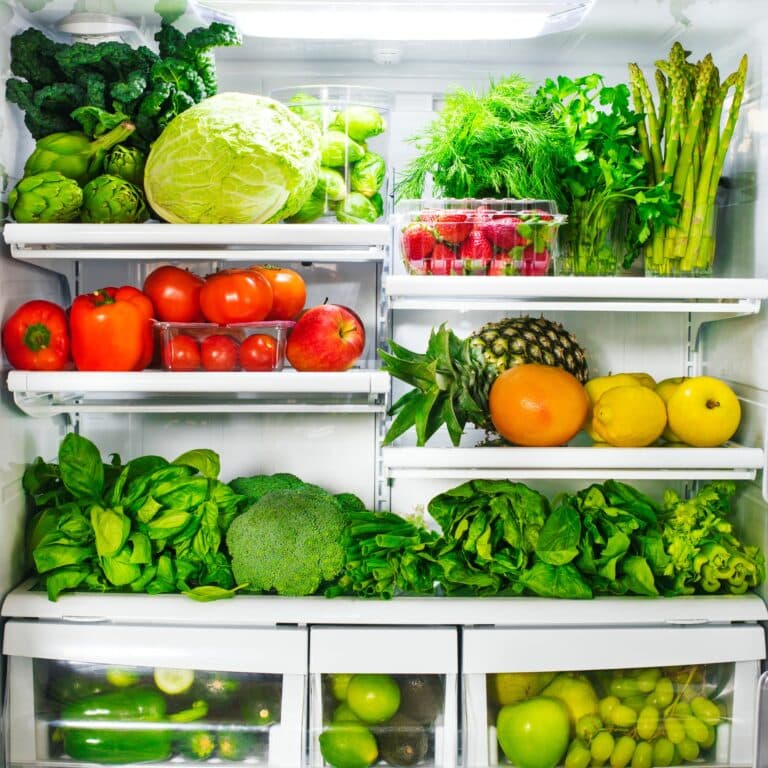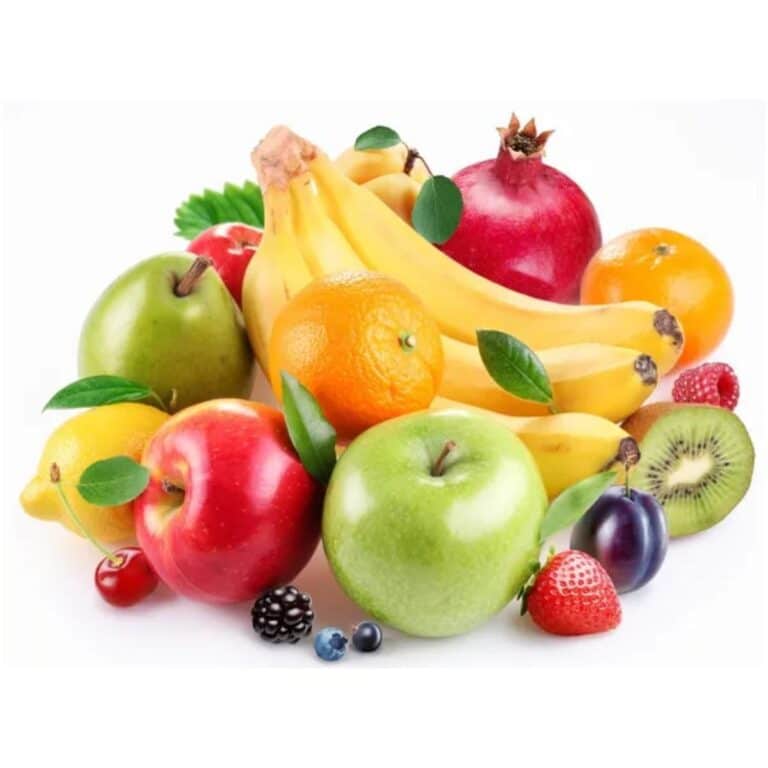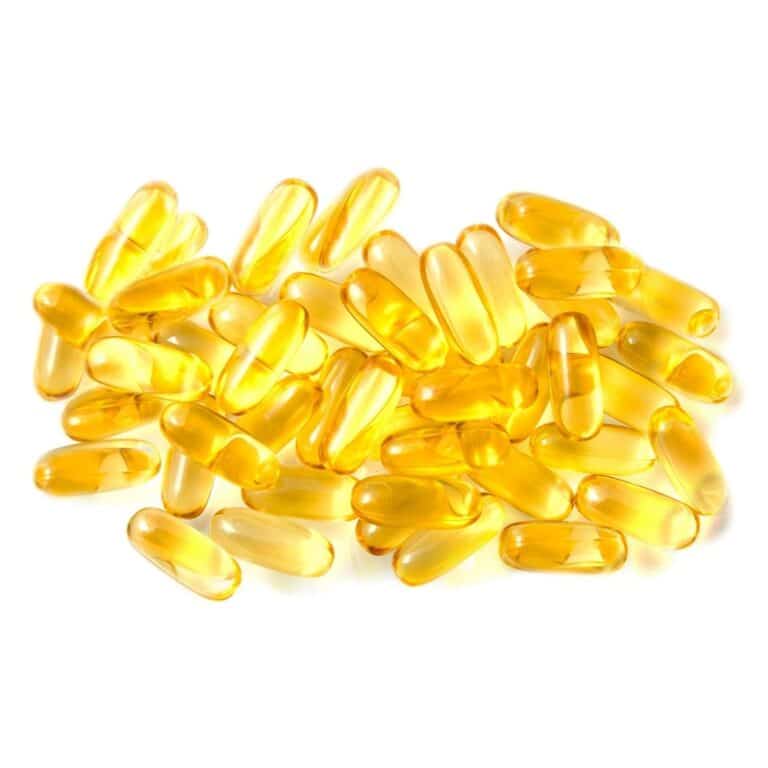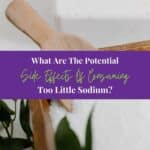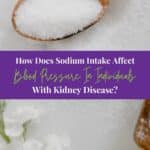How Much Sodium per Day for Renal Diet
Sodium is a mineral that is found in many foods. Many processed foods and prepared foods have added amounts of sodium to preserve the contents.
You may be steadily decreasing the fat in your diet but not realize how much sodium you take in and how it is affecting your kidneys.
Sodium can be linked to increased blood pressure, and increased blood pressure levels cause damage to your kidneys over time whether you're aware of your blood pressure being high or not. Sodium can also make you feel dehydrated.
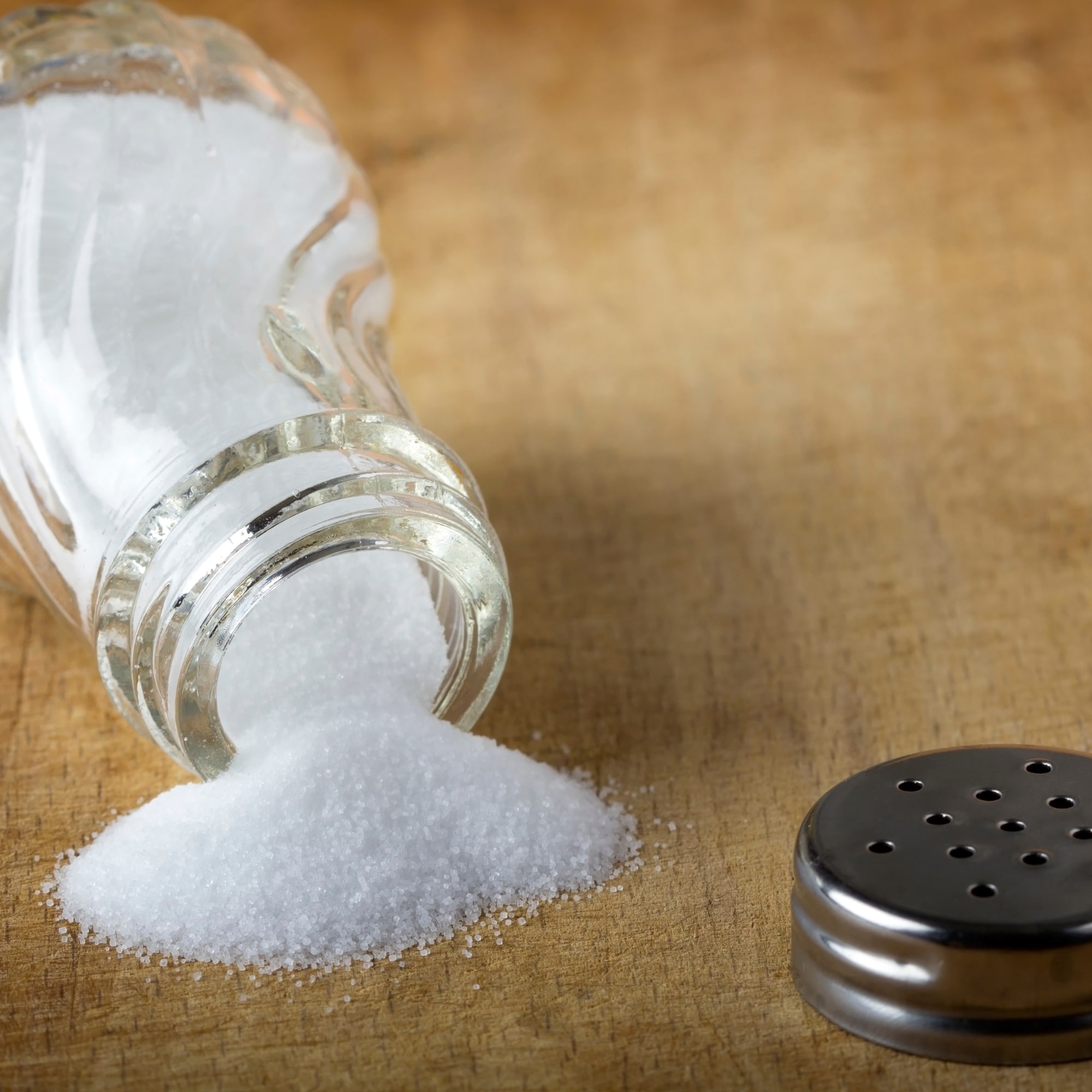
You're eager to better manage your chronic kidney disease (CKD) and you've heard sodium intake plays a big part in the dietary management aspect. But how much is too much?
It's time you understood the ins and outs of a renal-friendly diet, especially when it comes to sodium. Let's decode food labels, highlight hidden sodium culprits, and help you make healthier choices.
Jump to:
- Key Takeaways
- Understanding the Role of Sodium in the Body
- Sodium Limits for Those With Kidney Disease
- Decoding Nutritional Information on Food Packaging
- Unmasking Hidden Sodium in Everyday Foods
- Practical Suggestions for Lowering Sodium Consumption
- Identifying High-Sodium Foods to Avoid
- Seeking Out Low-Sodium Alternatives
- The Impact of Controlled Sodium Intake on Renal Health
- Sample Low Sodium Diet Meal Plan
- Frequently Asked Questions
- Avoiding Sodium Avoids Complications
Key Takeaways
- Sodium plays a crucial role in maintaining optimal bodily function and overall wellbeing.
- Extra sodium intake can lead to high blood pressure and heart disease.
- Balancing sodium intake is crucial for individuals with kidney disease.
- Hidden sodium in processed foods and restaurant meals should be avoided.
Understanding the Role of Sodium in the Body
Sodium is a fundamental electrolyte vital for human survival, playing a crucial role in various physiological processes. Here, we delve into the significance of sodium in the body, exploring its profound impact on health.
We will also unravel the intricate mechanisms by which the body regulates sodium levels, shedding light on the delicate balance between dietary sodium intake and overall well-being. Understanding sodium's role is essential in renal health.
For More Recipes and Ideas --->> Get Your Free Meals and Recipes That Are Perfect for Pre-Dialysis Diets, Pre-Dialysis with Diabetes, or Dialysis Diets.
Role of Sodium in Normal Body Functions
Sodium is a crucial electrolyte with a vital role in maintaining normal body functions. It primarily functions in conjunction with potassium to regulate fluid balance, nerve function, and muscle contractions.
Sodium helps transmit nerve impulses by facilitating the movement of electrical signals across cell membranes. It also plays a key role in muscle contraction, including the beating of the heart. Additionally, sodium is vital for maintaining proper hydration levels in the body, as it helps regulate fluid balance by controlling water distribution between cells and the bloodstream.
Without adequate sodium, our bodies would struggle to maintain blood pressure, nerve function, and muscle coordination, emphasizing its indispensable role in overall health and wellbeing.
However, it's essential to strike a balance, as excessive dietary sodium intake can lead to health problems like high blood pressure and cardiovascular issues.
Sodium Regulation in Body
The body has intricate mechanisms to regulate sodium levels, crucial for maintaining overall health. One of the primary regulators is the renin-angiotensin-aldosterone system (RAAS). When blood sodium levels drop, specialized cells in the kidneys release renin, which initiates a cascade leading to the release of aldosterone. Aldosterone signals the kidneys to reabsorb sodium, preventing excessive loss in urine.
Another crucial regulator is the hormone atrial natriuretic peptide (ANP), which opposes aldosterone's effects. When blood pressure rises or the heart's atria stretch due to increased blood volume, ANP is released, prompting the kidneys to excrete sodium and reduce blood volume and pressure.
Furthermore, the sensation of thirst can be triggered when sodium levels are too high, encouraging increased fluid intake to help dilute sodium concentrations.
This intricate system of hormonal and neural controls maintains the delicate balance of sodium in the body, ensuring that it remains within a narrow and vital range for optimal physiological function.
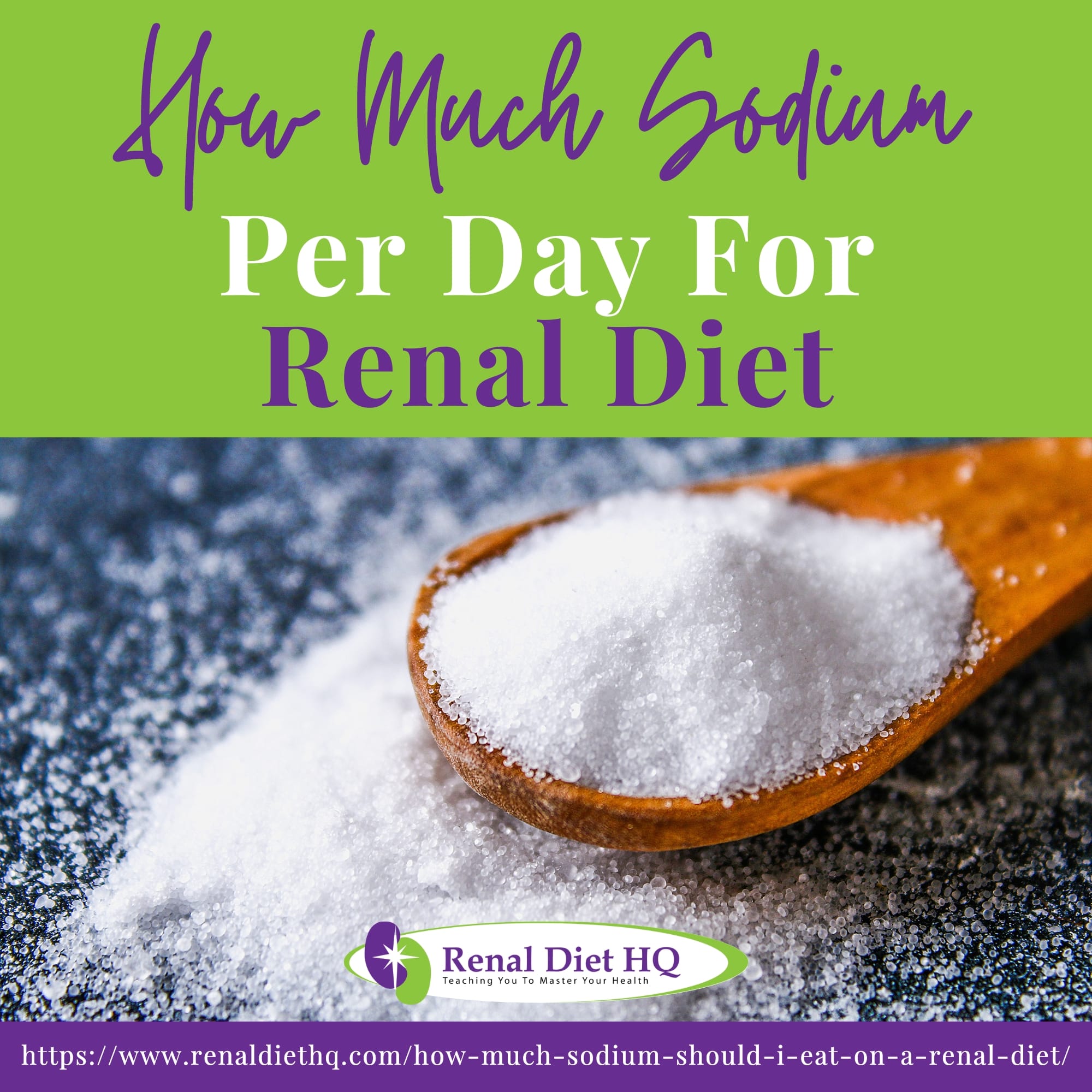
Sodium's Impact on Health
Sodium plays a dual role in health, with both essential benefits and potential risks. On the positive side, sodium is crucial for maintaining proper fluid balance, nerve function, and muscle contractions. Adequate dietary sodium intake is necessary for overall bodily function, especially in regulating blood pressure, which is essential for cardiovascular health.
However, excessive sodium consumption, often associated with a high-salt diet, can have detrimental effects on health. It is a leading contributor to high blood pressure (hypertension), a major risk factor for heart disease, stroke, and kidney problems. High sodium intake can also lead to fluid retention, which may exacerbate conditions like congestive heart failure.
Balancing dietary sodium intake is essential. It involves not only reducing the consumption of highly processed, sodium-laden foods but also ensuring an adequate intake of potassium, which counteracts sodium's effects.
Monitoring dietary sodium intake can help individuals maintain their health by striking the right balance and preventing the adverse consequences of excessive sodium consumption.
Sodium Limits for Those With Kidney Disease
In individuals with Chronic Kidney Disease, understanding the importance of sodium limits is paramount. Here, we look into the critical reasons behind the necessity of restricting sodium intake for CKD patients. We explore the potential consequences of excess sodium on kidney function and overall health. Discovering the delicate balance between sodium consumption and kidney health is crucial for managing CKD and enhancing the quality of life for those affected by this condition.
Why Sodium Is Controlled in CKD
Controlling dietary sodium intake is crucial in Chronic Kidney Disease due to the impaired kidney function characteristic of the condition. As CKD progresses, the kidneys' ability to filter waste products and regulate electrolytes, including sodium, diminishes. This can lead to sodium retention in the body, resulting in elevated blood pressure, fluid retention, and swelling, further burdening the already compromised kidneys.
High sodium levels can also disrupt the balance of other essential electrolytes, like potassium and calcium, potentially leading to dangerous imbalances. Moreover, excessive sodium intake can exacerbate proteinuria, a condition where the kidneys leak valuable proteins into the urine, accelerating kidney damage.
By controlling dietary sodium intake, CKD patients can help manage blood pressure, reduce the strain on their kidneys, and maintain a more stable internal environment, ultimately slowing the progression of the disease and enhancing their overall well-being.
Determining Safe Sodium Levels
Safe sodium levels for individuals with Chronic Kidney Disease are significantly lower than the average American intake.
While the Dietary Guidelines for Americans suggest limiting intake to less than 2,300 milligrams of sodium per day for most adults, CKD patients, especially those with advanced stages, are often advised to aim for even stricter limits, typically around 1,500 milligrams of sodium per day.
This reduced sodium target is essential because impaired kidney function in CKD makes it challenging to excrete excess sodium efficiently. High dietary sodium intake can lead to fluid retention, elevated blood pressure, and increased strain on the kidneys, potentially accelerating the progression of kidney damage.
Being able to limit sodium intake can help mitigate these risks, manage blood pressure, and slow CKD progression, thereby enhancing the quality of life and long-term outcomes for individuals battling this chronic condition.
It's crucial for CKD patients to work closely with healthcare professionals to establish personalized dietary guidelines based on their specific health needs.
Effects of Excess Sodium
Excessive salt intake in Chronic Kidney Disease patients can exacerbate their condition and lead to a range of complications and clinical implications. High dietary sodium levels can contribute to fluid retention, elevated blood pressure, and a heightened risk of cardiovascular events, all of which are particularly concerning for individuals with compromised kidney function.
Furthermore, excessive salt can directly harm the kidneys by increasing proteinuria and oxidative stress, accelerating the progression of CKD. It may also disturb electrolyte balance, potentially causing hyperkalemia or hyponatremia, further jeopardizing renal health.
Additionally, salt-induced hypertension can strain the already weakened kidneys, amplifying proteinuria and kidney damage. These complications underscore the importance of strict dietary sodium restriction in the diet of CKD patients to mitigate the adverse effects on their already vulnerable renal and cardiovascular systems.
Complications of Excessive Salt Intake in CKD Patients:
| Complication | Description |
| Fluid Retention | Excess sodium can lead to fluid buildup, exacerbating edema and increasing blood pressure. |
| Hypertension | High salt intake is a major contributor to elevated blood pressure, elevating the risk of cardiovascular events. |
| Cardiovascular Events | Elevated blood pressure and sodium-related damage increase the likelihood of heart problems and stroke. |
| Kidney Damage | Excessive salt may directly harm the kidneys, accelerating proteinuria and oxidative stress. |
| Electrolyte Imbalances | Sodium imbalance can lead to hyperkalemia or hyponatremia, further compromising renal function. |
| Proteinuria Exacerbation | High dietary sodium intake worsens proteinuria, worsening kidney damage in CKD patients. |
Decoding Nutritional Information on Food Packaging
In this article section, we delve into the critical aspects of Understanding Sodium Content Labels and Comparing Sodium in Products. We will break down the intricacies of interpreting sodium information on food labels, helping you grasp its significance in your diet.
Additionally, we'll provide practical guidance on how to effectively compare sodium levels among different food items, enabling you to make informed choices that align with your dietary sodium restrictions.
Understanding Sodium Content Labels
Interpreting sodium or salt labels is crucial for making informed dietary choices. These labels convey the sodium content and can greatly impact your health:
- Sodium per Serving: This indicates the amount of sodium in one serving of the product. It's essential to check serving sizes to avoid underestimating your dietary sodium intake.
- Low Sodium: Foods labeled as "low sodium" contain a relatively small amount of sodium per serving. This is generally defined as 140 milligrams or less of sodium per serving.
- Lite (or Light): This label may suggest a reduced sodium content but doesn't always guarantee it. Check the nutrition facts to confirm the actual sodium levels.
- No Salt (or Salt-Free): These products should contain virtually no added salt. Be cautious as they may still have natural sodium from ingredients.
- Less Sodium: Foods labeled as "less sodium" should have at least 25% less sodium compared to the regular version of the product.
To maintain a heart-healthy diet, focus on products with lower sodium per serving and be vigilant about serving sizes and label claims.
Comparing Sodium in Products
Comparing sodium levels in different food products is essential for making informed dietary choices, especially for individuals aiming to reduce their dietary sodium intake. Here's how to effectively compare sodium in products:
- Check Serving Sizes: Always compare sodium content based on the same serving size for accurate assessments.
- Read Nutrition Labels: Review the Nutrition Facts labels on packaging. Look for the "Sodium" or "Salt" content, typically measured in milligrams (mg) per serving.
- Use Percent Daily Value (%DV): This percentage helps you see how much a serving contributes to your daily sodium limit (usually around 2,300 mg for healthy adults). Aim for products with lower %DV for sodium.
- Compare Similar Items: When choosing between similar products, opt for the one with the lower sodium content.
- Consider Unprocessed Foods: Whole, unprocessed foods generally contain less sodium compared to their processed counterparts, making them a healthier choice.
- Be Cautious of "Light" Claims: "Light" doesn't always mean lower sodium. Check the label for confirmation.
By diligently comparing sodium levels, you can make choices that align with your dietary goals and reduce the risk of health issues associated with excessive dietary sodium intake, such as high blood pressure and cardiovascular disease.
Unmasking Hidden Sodium in Everyday Foods
You might be surprised to learn about the hidden sodium lurking in many of your favorite processed foods, often in amounts that can significantly impact your daily intake.
But don't worry, there are alternatives such as sodium substitutes that you could consider to help manage and reduce your sodium consumption.
However, it's important to understand that these alternatives aren't without their own set of risks and potential side effects which we'll explore in detail.
Sodium in Processed Foods
Sodium plays a multifaceted role in processed foods, serving as a preservative, flavor enhancer, and texture modifier. Its preservative properties help extend the shelf life of products, preventing spoilage.
Beyond sodium chloride (table salt), various sodium additives are prevalent in processed foods, including sodium bicarbonate (baking soda), sodium benzoate, sodium citrate, and sodium nitrate/nitrite. These additives serve diverse functions, such as regulating acidity, enhancing flavors, and preserving color and texture.
However, excessive dietary sodium intake from processed foods can lead to health concerns, particularly high blood pressure and an increased risk of cardiovascular disease, especially for patients with kidney disease.
It's essential for consumers to scrutinize food labels for anything with the word “sodium,” opt for products with lower sodium content, and limit their consumption of heavily processed items.
Sodium Substitutes and Risks
Salt substitutes are often used as alternatives to traditional table salt (sodium chloride) to reduce dietary sodium intake, which can be beneficial for individuals with hypertension or other health concerns. Common salt substitutes include potassium chloride, magnesium-based salts, and blends of various herbs and spices.
Potassium chloride, a primary salt substitute, can help lower blood pressure by balancing sodium-potassium ratios. However, it should be used cautiously, as excessive potassium intake can be harmful, especially for those with kidney problems. High potassium levels can lead to muscle weakness, irregular heart rhythms, and in severe cases, cardiac arrest.
Magnesium-based salts can be another substitute but should be monitored, as excessive magnesium intake may lead to diarrhea and stomach discomfort.
Blends of herbs and spices can enhance flavor without adding sodium or potassium, making them a healthier option. Nevertheless, individuals should be cautious with any salt substitute, especially if they have underlying health conditions, and consult with a healthcare professional for guidance on their specific dietary needs.
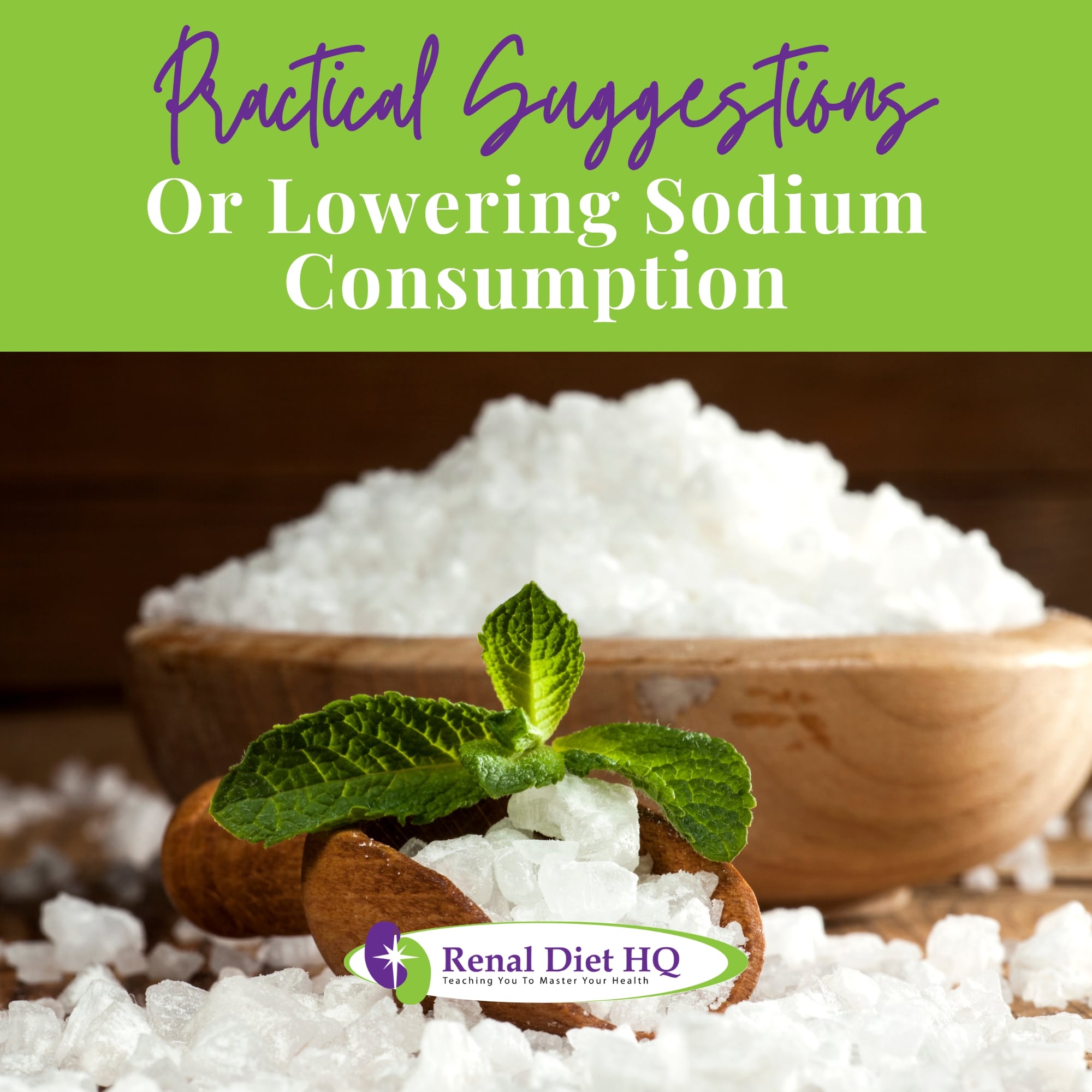
Practical Suggestions for Lowering Sodium Consumption
Here, we discuss how to have a healthier, tastier diet even when reducing your salt consumption. In this section, we explore the art of flavor enhancement through herbs and spices, allowing you to savor your meals without excess sodium.
Additionally, we unveil smart meal planning techniques that make reducing dietary sodium intake a breeze. Striking a balance between sodium restriction and having flavorful meals is essential in starting a kidney friendly eating plan that you can enjoy without compromising your health.
Adding Flavor Without Adding Salt
Maximizing flavors through herbs and spices is an essential culinary strategy for those on a salt-restricted renal diet. Such diets are crucial for managing chronic kidney disease and maintaining overall health. By reducing sodium, the risk of fluid retention and high blood pressure is mitigated, alleviating strain on the kidneys.
However, this dietary restriction need not result in bland, unappetizing meals. Herbs like basil, thyme, and rosemary, as well as spices like cumin, paprika, and turmeric, offer a treasure trove of flavors without compromising sodium levels. They add complexity, aroma, and depth to dishes, making them not only kidney-friendly but also delicious.
This approach empowers individuals to embrace a flavorful, satisfying, and health-conscious culinary journey while adhering to their salt-restricted renal diet.
Meal Planning Strategies
Managing a low salt diet is essential for individuals with chronic kidney disease to protect kidney function and overall health. Effective meal planning is a cornerstone of this dietary approach. Here are key strategies to reduce salt and processed foods while maximizing flavor with herbs and spices:
- Whole, Fresh Ingredients: Prioritize fresh fruits and vegetables, lean proteins, and whole grains. These items are naturally lower in sodium and provide essential nutrients.
- Label Reading: Scrutinize food labels for sodium content. Opt for products with lower sodium levels or choose those labeled as "low sodium" or "sodium-free."
- Home Cooking: Preparing meals at home allows you to control ingredients and sodium content. Avoid canned or pre-packaged foods, which often contain high levels of sodium.
- Spice It Up: Embrace the world of herbs and spices to infuse flavor into dishes. Basil, oregano, cumin, bay leaf, and garlic powder can elevate your meals without sodium.
- Limit Processed Meats: Reduce consumption of processed meats like bacon, sausages, and deli meats, as they are high in sodium and additives.
- Fresh Herbs and Citrus: Incorporate fresh herbs like cilantro and parsley, and use citrus fruits like lemon and lime to add zing to salads and proteins.
- Low-Sodium Broths: Choose low-sodium or homemade broths for soups and stews such as chicken noodle soup instead of their high-sodium counterparts.
- Ditch the Salt Shaker: Avoid adding table salt during cooking or at the dining table. Allow natural flavors to shine through.
- Experiment: Don't be afraid to experiment with different herb and spice combinations to find your favorite flavor profiles.
- Meal Prep: Prepare your custom meal plans in advance to ensure a well-balanced, low salt diet. This helps you avoid impulsive choices that may be high in salt.
By implementing these strategies, individuals on a low sodium renal diet can create a menu that's not only kidney-friendly but also delicious and satisfying. It's about reimagining the role of herbs and spices as the stars of the show in your culinary journey, making every meal a flavorful and health-conscious experience.
Identifying High-Sodium Foods to Avoid
You might not realize it, but your daily sodium intake could be higher than you think, especially if you're regularly consuming processed foods and restaurant meals. It's important to understand that these types of foods often contain a significant amount of hidden sodium, which can have adverse effects on your health.
Processed Foods' Sodium Content
In a renal diet, avoiding high-sodium processed foods is crucial to manage chronic kidney disease effectively. High sodium intake can lead to fluid retention, elevated blood pressure, and worsen kidney function. Here are common high-sodium processed foods to steer clear of:
- Canned Soups: Many canned soups contain excessive salt, with some brands exceeding your daily recommended dietary sodium intake in a single serving.
- Processed Meats: Bacon, sausages, hot dogs, and deli meats are loaded with sodium and often contain additives that are harmful to kidneys.
- Canned Vegetables: Canned vegetables are often preserved in salty brines, significantly increasing their sodium content.
- Frozen Meals: Convenience frozen meals, including pizzas, burritos, and TV dinners, can be extremely high in sodium to enhance flavor and shelf life.
- Fast Food: Fast-food items like burgers, fries, and fried chicken are notorious for their sodium content due to added salt and processed ingredients.
- Condiments: Soy sauce, ketchup, barbecue sauce, and salad dressings can be sodium-rich condiments. Opt for low-sodium or make homemade versions.
- Snack Foods: Chips, pretzels, and salted nuts are often drenched in sodium to satisfy cravings.
- Canned and Processed Cheese: Cheese spreads and processed cheese products are high in sodium.
- Packaged Sweets: Baked goods, cakes, and cookies can contain hidden sources of sodium in baking powder or soda.
- Salty Seasoning Blends: Seasoning packets, bouillon cubes, and some spice blends can be excessively salty.
Avoiding these high-sodium processed foods is essential for preserving kidney function and overall health in a renal diet. Instead, focus on fresh, whole foods and flavor enhancement through herbs and spices to maintain a well-balanced, kidney-friendly diet.
Sodium in Restaurant Meals
When following a low salt diet, it's essential to be cautious about restaurant meals that can be excessively high in salt, as excessive sodium intake can lead to health issues like hypertension and heart disease. Several restaurant dishes are notorious for their sodium content and should be avoided or consumed sparingly.
Firstly, fast food options like burgers, fries, and fried chicken tend to be laden with salt, both in the meats and the accompanying condiments. Similarly, many Asian dishes, such as soy sauce-heavy stir-fries or sushi with soy sauce dipping, can be sodium bombs.
Mexican cuisine can also be problematic due to the use of salty cheeses, sauces, and processed meats in dishes like nachos, tacos, and burritos. Additionally, canned soups, broths, and gravies used in various restaurant recipes can contain excessive sodium.
To maintain a low sodium diet while dining out, opt for grilled or steamed dishes, request sauces and dressings on the side, and inquire about low-sodium menu options if available. Being mindful of these high-sodium culprits can help you make healthier choices when dining in restaurants.
Seeking Out Low-Sodium Alternatives
In this section, we look at real-world tips on how to seek out low sodium alternatives. By adopting mindful grocery shopping and preparing meals at home, we'll uncover how small changes in our daily choices can lead to significant health benefits, especially for people with kidney disease.
Low-Sodium Shopping Strategies
For individuals with Chronic Kidney Disease (CKD), managing sodium intake is crucial to prevent fluid retention and maintain kidney health. Here are some essential low-sodium shopping strategies:
- Read Labels: Scrutinize food labels for sodium content. Look for products with "low-sodium," "sodium-free," or "no salt added" labels.
- Fresh is Best: Choose fresh foods over processed options. Fresh fruits, vegetables, lean meats, and unprocessed grains are naturally lower in sodium.
- Limit Canned Goods: Canned foods often contain added salt for preservation. If using canned items, rinse them thoroughly to reduce sodium content.
- Select Low-Sodium Alternatives: Opt for low-sodium or sodium-free versions of condiments like soy sauce, broth, and canned soups.
- Herbs and Spices: Enhance flavor with herbs, spices, and salt-free seasoning blends instead of salt.
- Dairy Choices: Select low-sodium or sodium-free dairy products like yogurt and cheese.
- Plan Meals: Plan menus in advance to control sodium intake and avoid last-minute high-sodium choices. Make sure to bring a comprehensive shopping list to prevent impulse purchases.
- Consult a Dietitian: Seek guidance from a registered dietitian who can tailor a low-sodium diet to your specific CKD stage and dietary requirements.
Home Cooking Benefits
Home cooking offers numerous advantages for individuals aiming to maintain a low sodium diet:
- Control Over Ingredients: When you cook at home, you have complete control over what goes into your meals, allowing you to choose low-sodium alternatives and fresh ingredients.
- Portion Management: Home-cooked meals enable you to manage portion sizes, reducing the risk of overeating and excessive sodium intake.
- Flavor Customization: You can experiment with herbs, spices, and salt-free seasonings to enhance flavors without relying on excessive salt.
- Reduced Processed Foods: Cooking at home minimizes reliance on processed and fast foods, which often contain hidden sodium.
- Healthier Cooking Techniques: You can employ healthier cooking methods like grilling, baking, steaming, and sautéing, which inherently reduce sodium content compared to frying or deep-frying.
- Personalized Diet: Home cooking allows you to tailor meals to specific dietary needs or restrictions, ensuring a low sodium diet that aligns with your health goals.
- Cost-Efficiency: Cooking at home can also be cost-effective and may promote better overall nutrition.
Incorporating home-cooked meals into your routine empowers you to make informed choices and maintain better control over sodium intake, promoting better health and quality of life, even with CKD.
The Impact of Controlled Sodium Intake on Renal Health
When you keep your sodium intake under control, you'll not only support healthier kidneys but also enjoy overall health benefits. These benefits include better blood pressure control and minimized risk of heart disease.
Sodium's Role in Renal Health
Controlled sodium intake significantly benefits kidney health in several ways:
- Blood Pressure Regulation: High sodium consumption can lead to elevated blood pressure, increasing the strain on the kidneys. By reducing sodium intake, blood pressure can be better managed, preventing kidney damage.
- Slower Progression of CKD: In individuals with Chronic Kidney Disease, limiting sodium intake can slow down the progression of the disease, preserving kidney function over time.
- Reduced Risk of Kidney Stones: Lower sodium levels in the diet help minimize the formation of kidney stones, which are often composed of salts and minerals.
- Prevention of Edema: Controlling sodium intake helps prevent fluid retention (edema) in the body, which can strain the kidneys and exacerbate kidney problems.
By maintaining a balanced and low-sodium diet, individuals can promote kidney health, reduce the risk of kidney-related complications, and enhance overall well-being.
Controlled Sodium Intake Benefits
Controlling sodium intake offers a multitude of health benefits:
- Management of Blood Pressure: Reduced sodium intake helps regulate blood pressure, lowering the risk of hypertension and related cardiovascular diseases.
- Heart Health: Lower sodium levels contribute to a healthier heart, reducing the risk of heart attacks, strokes, and other heart-related conditions.
- Kidney Function: Managing sodium can alleviate strain on the kidneys, preserving their function and reducing the risk of kidney disease or worsening existing kidney conditions.
- Bone Disease: High sodium diets can lead to calcium loss from bones, increasing the risk of osteoporosis. Lower sodium intake helps maintain bone density.
- Reduced Fluid Retention: Controlling sodium levels minimizes fluid retention, easing discomfort for individuals with conditions like edema or congestive heart failure.
- Digestive Health: Lower sodium intake can alleviate symptoms of certain digestive disorders, such as acid reflux and gastritis.
- Overall Well-being: A balanced sodium intake supports overall health, providing more energy, better sleep, and improved quality of life.
By managing sodium intake, individuals can enjoy improved health and reduce the risk of various chronic diseases, ultimately leading to a longer, more vibrant life.
Sample Low Sodium Diet Meal Plan
Breakfast: Scrambled Egg Whites with Vegetables (Sodium: 90 mg)
- 2 egg whites scrambled with bell peppers.
- A slice of whole-grain toast (check for low-sodium bread).
- Fresh fruit salad (berries, banana, and apple).
Lunch: Quinoa and Chickpea Salad (Sodium: 280 mg)
- A generous portion of quinoa mixed with low-sodium chickpeas, cucumber, red onion, and parsley.
- Dress with a homemade vinaigrette using olive oil, lemon juice, and salt-free herbs and spices.
- Sliced carrots and celery sticks for added crunch.
Snack: Greek Yogurt with Berries (Sodium: 45 mg)
- A serving of plain, low-sodium Greek yogurt.
- Top with fresh berries and a drizzle of honey.
Dinner: Baked Lemon Herb Chicken (Sodium: 240 mg)
- Skinless chicken breast or lean chicken strips marinated in lemon juice, garlic, and a blend of salt-free herbs and spices.
- Baked sweet potato with a sprinkle of fresh herbs.
- Steamed broccoli with lemon zest.
Snack (if needed): Almonds (Sodium: 0 mg)
- A small handful of unsalted almonds for a satisfying crunch.
Day's Total Sodium: 655 mg
This sample low-sodium meal plan keeps salt intake well below the recommended 1500 milligrams of sodium per day for individuals on a restricted sodium diet. It also avoids high potassium and high phosphorus ingredients, making it suitable for those with kidney concerns.
Adjust portion sizes and ingredients to fit personal dietary requirements and consult a healthcare professional or dietitian for personalized guidance on managing sodium intake, especially if you have specific medical conditions or dietary restrictions.
Frequently Asked Questions
Consuming too little sodium can lead to several potential side effects, including muscle cramps, weakness, nausea, vomiting, dizziness, and headaches. Extremely low sodium levels, known as hyponatremia, can be life-threatening, causing confusion, seizures, and, in severe cases, coma. It's important to strike a balance in sodium intake, as excessive restriction can disrupt the body's electrolyte balance. It's crucial to consult with a healthcare professional or registered dietitian to determine an appropriate sodium intake level based on individual health needs and conditions.
In individuals with kidney disease, sodium intake can significantly impact blood pressure. The kidneys play a vital role in regulating sodium levels in the body. When kidney function is compromised, excess sodium can accumulate, leading to fluid retention and elevated blood pressure. High blood pressure can further damage the kidneys, creating a vicious cycle. Therefore, limiting sodium intake is crucial for managing blood pressure and slowing the progression of kidney disease. Medical guidance and personalized dietary recommendations from a healthcare provider or dietitian are essential for individuals with kidney disease to maintain optimal sodium levels and protect their kidney health.
Avoiding Sodium Avoids Complications
Managing your sodium intake is crucial for kidney health. By understanding food labels, avoiding high-sodium foods, and choosing low-sodium alternatives, you can make informed choices that support your renal diet.
Remember, balancing sodium isn't just about restriction; it's about making smarter decisions every day, and maximizing strategies such as the use of herbs and spices and being vigilant about food labels.
Adjusting to a low sodium diet may be difficult when you’re used to consuming salty foods on a regular basis, but this restriction is necessary not only to improve your health but also to maintain your well being and avoid complications.

